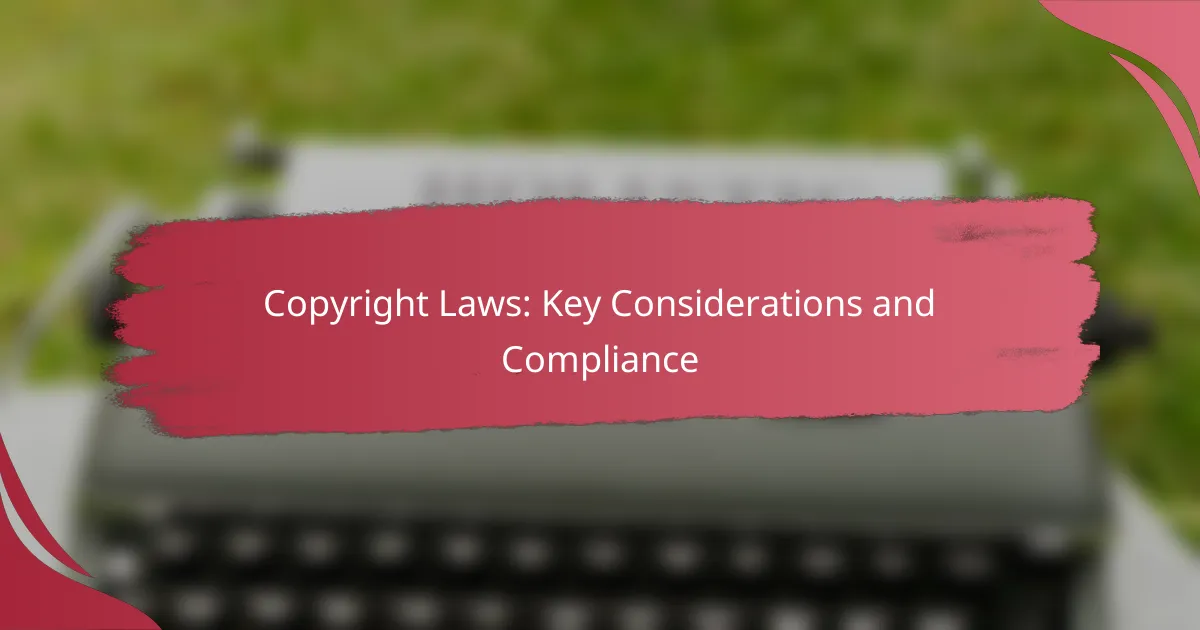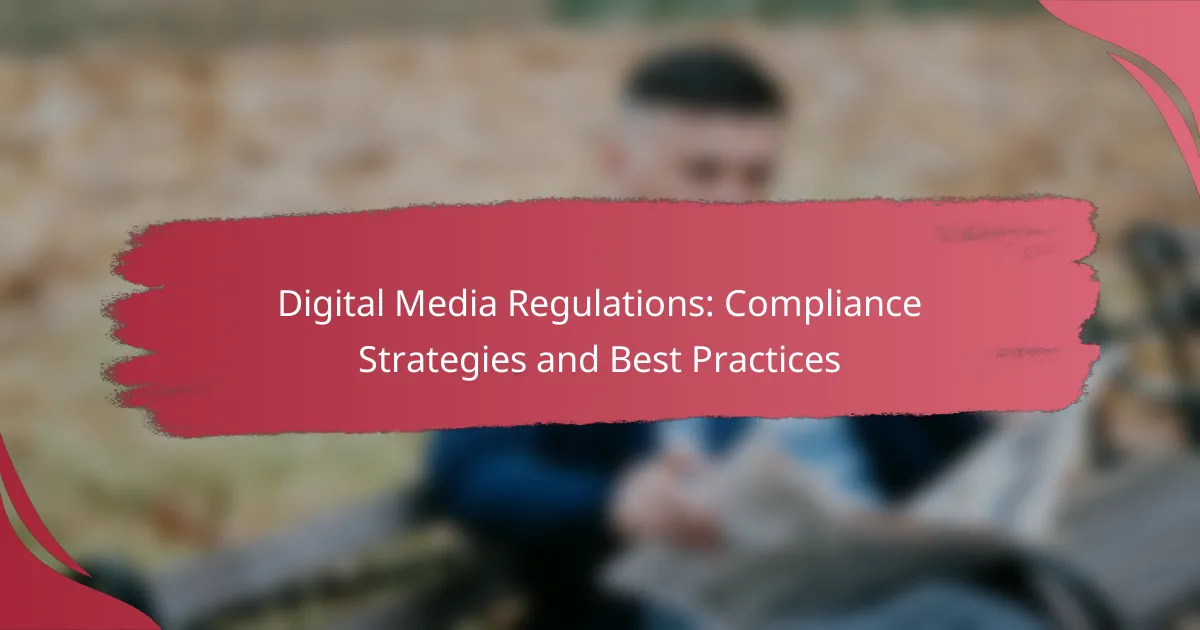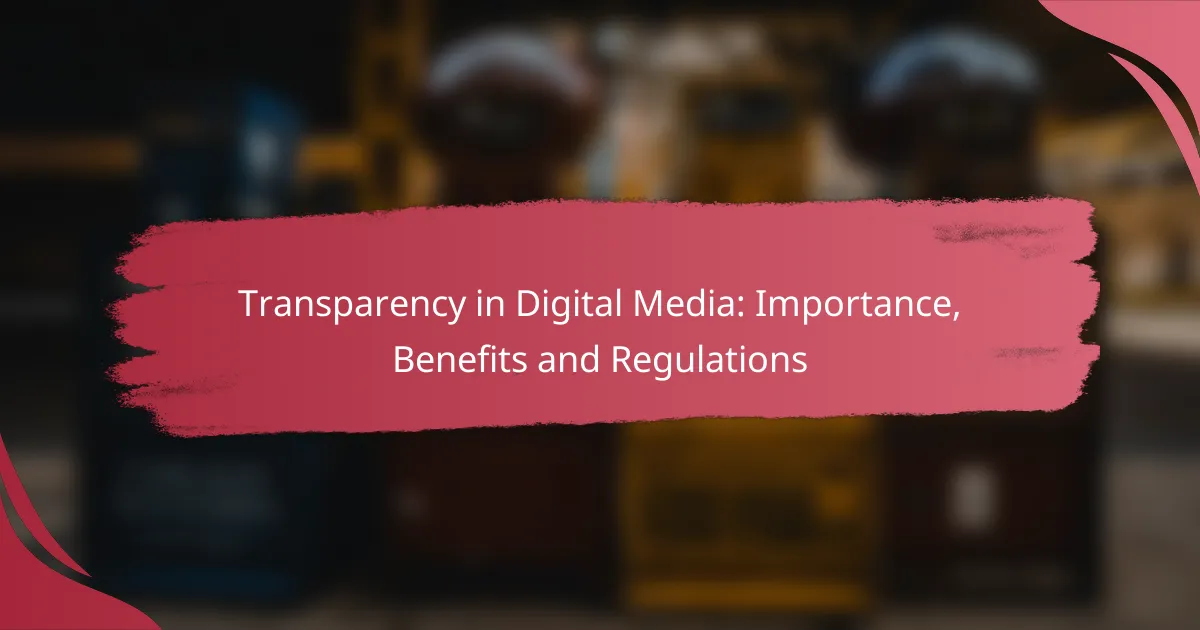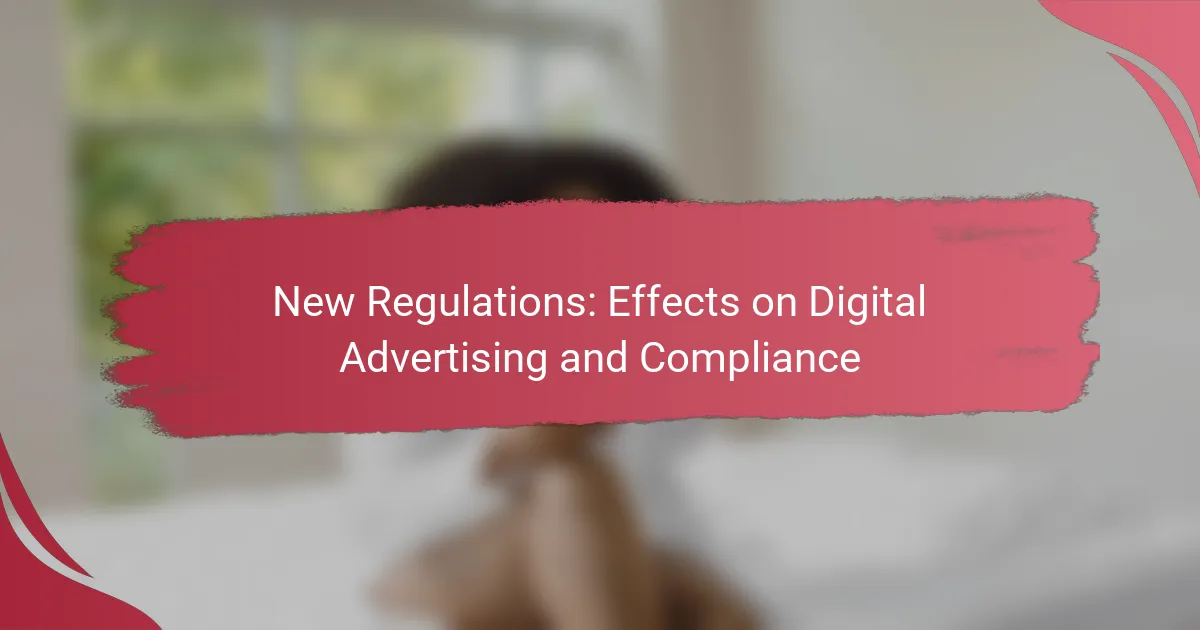Copyright laws play a crucial role in protecting original works of authorship, granting creators exclusive rights to their creations. Key legislation, such as the Copyright Act of 1976 and the Digital Millennium Copyright Act (DMCA), outlines the framework for copyright enforcement and compliance. Understanding these laws is vital for avoiding infringement and ensuring that the use of copyrighted material is both legal and respectful of creators’ rights.
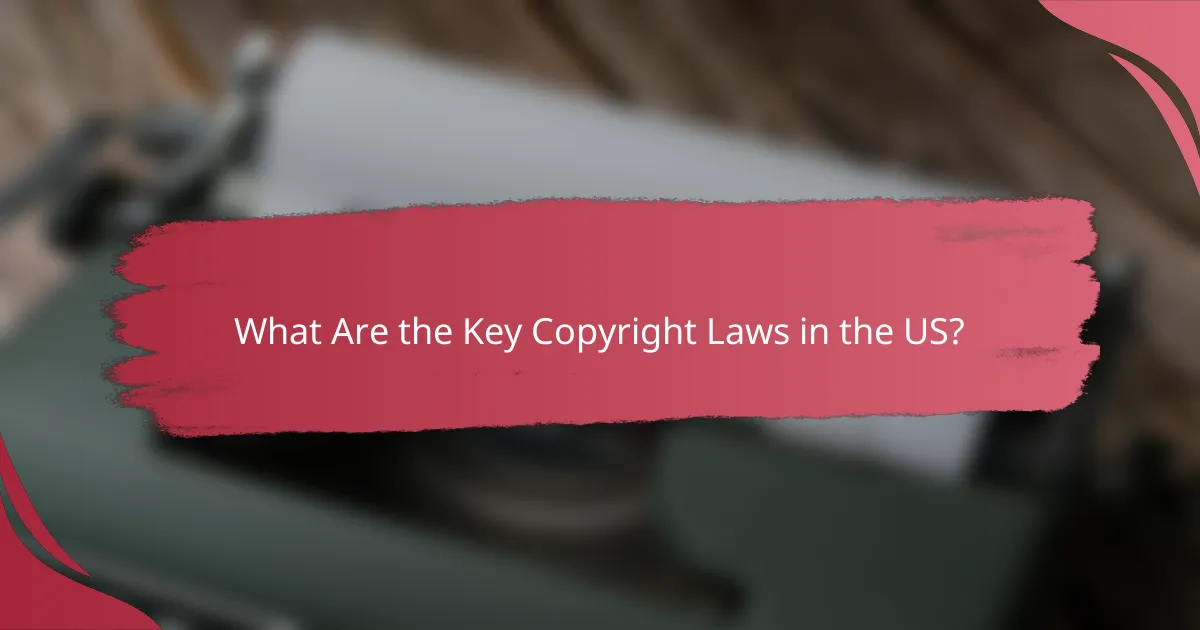
What Are the Key Copyright Laws in the US?
The key copyright laws in the US primarily govern the protection of original works of authorship, ensuring creators have exclusive rights to their creations. These laws include the Copyright Act of 1976, the Digital Millennium Copyright Act (DMCA), and others that shape how copyright is enforced and interpreted.
Copyright Act of 1976
The Copyright Act of 1976 is the foundational legislation that established the framework for copyright protection in the United States. It grants authors exclusive rights to reproduce, distribute, and display their works, covering a wide range of creative expressions such as literature, music, and visual arts.
This act also introduced the concept of “fair use,” allowing limited use of copyrighted material without permission under certain conditions. Understanding the specifics of this act is crucial for creators to protect their rights and for users to navigate copyright compliance.
Digital Millennium Copyright Act (DMCA)
The DMCA, enacted in 1998, addresses the challenges posed by digital technology and the internet. It provides a framework for copyright enforcement online, including provisions for safe harbors that protect internet service providers from liability for user-generated content, provided they comply with takedown notices.
Creators should be aware of the DMCA’s requirements for reporting copyright infringement and the potential penalties for violations. This law is essential for anyone operating in the digital space, as it balances the rights of copyright holders with the interests of online platforms.
Fair Use Doctrine
The Fair Use Doctrine allows for the limited use of copyrighted material without obtaining permission, under specific circumstances. Factors considered include the purpose of use, the nature of the copyrighted work, the amount used, and the effect on the market value of the original work.
Common examples of fair use include commentary, criticism, news reporting, teaching, and research. However, determining fair use can be complex, so creators and users should carefully evaluate their situations to avoid potential infringement.
Copyright Term Extension Act
The Copyright Term Extension Act, passed in 1998, extended the duration of copyright protection for works created after January 1, 1978, to the life of the author plus 70 years. This extension applies to corporate authors as well, granting protection for 95 years from publication or 120 years from creation, whichever is shorter.
This act significantly impacts the availability of works for public use, as many works remain protected for longer periods. Understanding these terms is vital for creators and users alike when considering the use of older works.
Berne Convention Compliance
The United States is a signatory to the Berne Convention, an international agreement that mandates minimum standards for copyright protection among member countries. Compliance with this convention ensures that US authors receive the same level of protection abroad as they do at home.
Key provisions include automatic copyright protection without the need for registration and the recognition of moral rights. Awareness of Berne Convention compliance is important for creators who wish to protect their works internationally and for users who engage with foreign content.
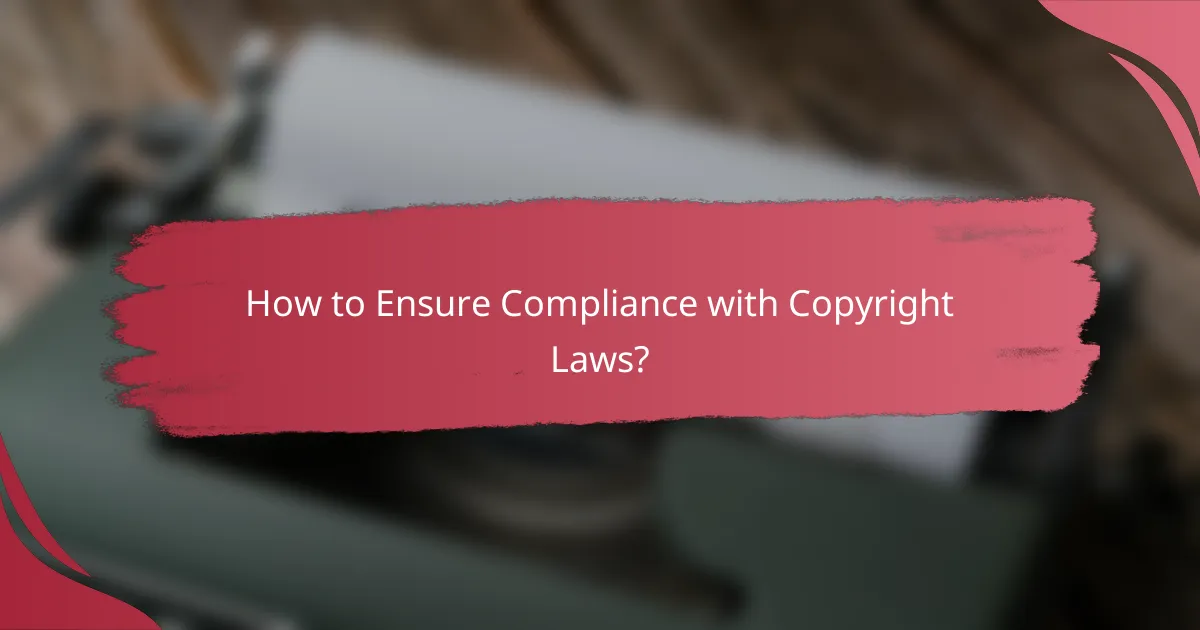
How to Ensure Compliance with Copyright Laws?
To ensure compliance with copyright laws, it is essential to understand the legal requirements for using copyrighted material. This includes obtaining the necessary permissions, utilizing available resources, and properly marking your content to avoid infringement.
Obtain Proper Licensing
Obtaining proper licensing is crucial for using copyrighted works legally. This may involve negotiating terms with the copyright holder or purchasing a license from a licensing agency. Be aware that licensing fees can vary widely based on the type of content, usage, and duration.
For example, music licenses can range from a few hundred to several thousand dollars depending on the scope of use, while stock images may have lower fees. Always keep records of your licenses to demonstrate compliance if needed.
Use Creative Commons Resources
Creative Commons (CC) provides a range of licenses that allow creators to share their work legally. These resources can be used without direct permission, as long as you adhere to the terms specified in the license, such as attribution or non-commercial use.
Many websites offer CC-licensed content, including images, music, and text. Always check the specific license type to ensure your intended use aligns with the permissions granted, and consider using CC resources to enhance your projects without infringing on copyright.
Implement Copyright Notices
Implementing copyright notices on your work is an effective way to assert your rights and inform others of the ownership of the content. A copyright notice typically includes the © symbol, the year of publication, and the name of the copyright owner.
For example, a notice might read: © 2023 John Doe. This not only serves as a deterrent against unauthorized use but also helps establish your claim in case of disputes. Regularly update your notices to reflect any new works or changes in ownership.
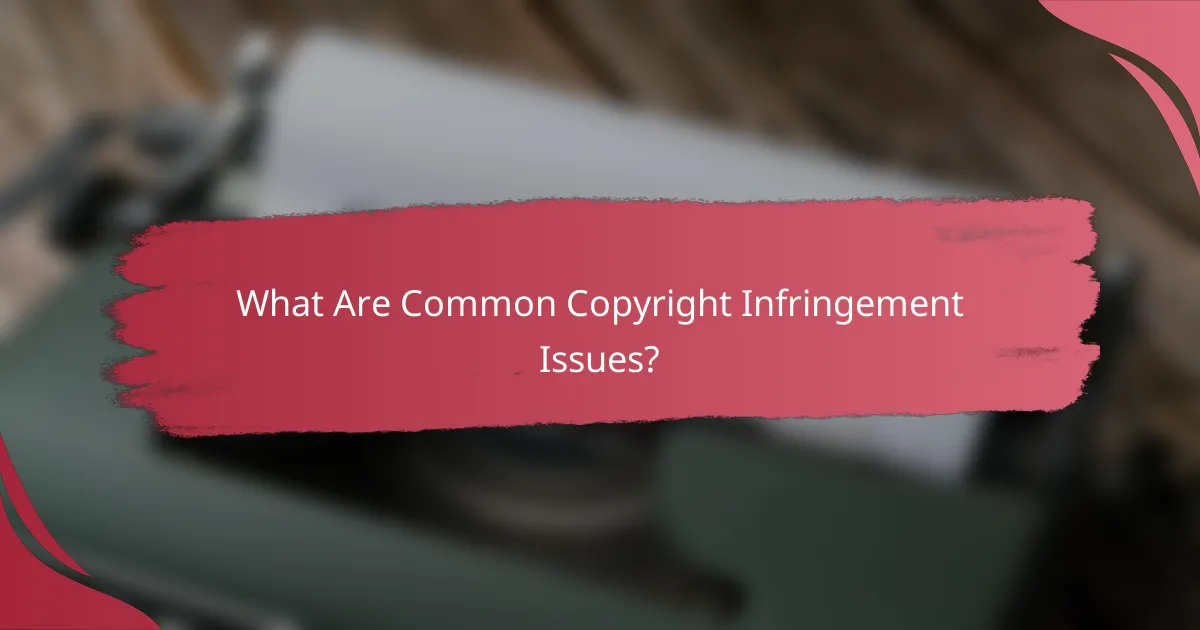
What Are Common Copyright Infringement Issues?
Common copyright infringement issues include unauthorized use of images, plagiarism in written content, and music licensing violations. These violations can lead to legal consequences and financial penalties, making it essential for creators and businesses to understand and comply with copyright laws.
Unauthorized Use of Images
Unauthorized use of images occurs when someone uses a photograph or graphic without permission from the copyright holder. This can happen in various contexts, such as websites, advertisements, and social media posts. Always check the licensing terms of images before using them to avoid potential legal issues.
To ensure compliance, consider using images from stock photo websites that provide clear licensing agreements. Alternatively, you can create original images or use images that are in the public domain or under Creative Commons licenses, which often allow for free use with proper attribution.
Plagiarism in Written Content
Plagiarism involves using someone else’s written work without proper attribution, which can lead to serious academic and professional consequences. This issue is particularly relevant in fields like journalism, academia, and content creation, where originality is crucial.
To avoid plagiarism, always cite your sources and use quotation marks for direct quotes. Tools like plagiarism checkers can help identify unintentional similarities with existing works. Familiarize yourself with citation styles relevant to your field, such as APA or MLA, to ensure proper credit is given.
Music Licensing Violations
Music licensing violations occur when a piece of music is used without the appropriate licenses or permissions, which can lead to hefty fines or legal action. This is common in videos, podcasts, and public performances where copyrighted music is played without authorization.
To stay compliant, obtain licenses from music rights organizations such as ASCAP, BMI, or SESAC for public performances and broadcasts. For online content, consider using royalty-free music or tracks from services that offer licenses for a fee, ensuring you have the right to use the music in your projects.
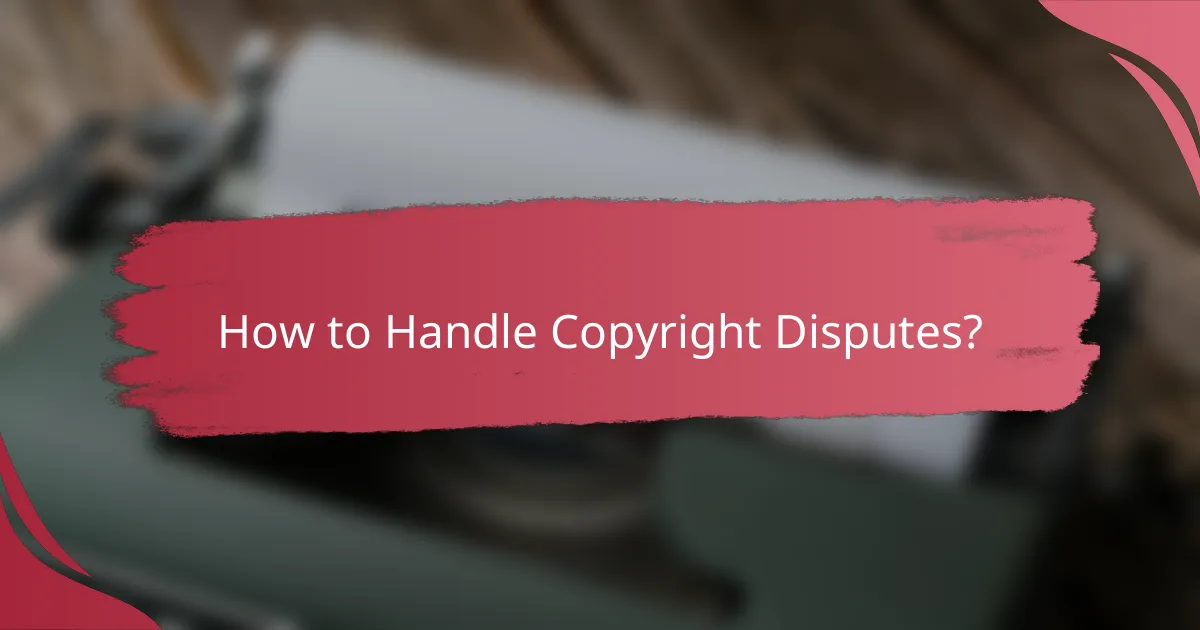
How to Handle Copyright Disputes?
Handling copyright disputes involves understanding your rights and the appropriate steps to resolve the issue. Key methods include sending cease and desist letters, exploring alternative dispute resolution, and, if necessary, engaging in litigation.
Cease and Desist Letters
A cease and desist letter is a formal request to stop infringing on copyright. It typically outlines the specific infringement and demands that the recipient cease the activity immediately.
When drafting a cease and desist letter, be clear and concise. Include details such as the copyrighted work, the nature of the infringement, and a deadline for compliance. This letter can often resolve disputes without further escalation.
Alternative Dispute Resolution
Alternative dispute resolution (ADR) encompasses methods like mediation and arbitration to settle copyright disputes outside of court. ADR can be quicker and less costly than litigation, making it an attractive option for many parties.
In mediation, a neutral third party helps facilitate a resolution, while arbitration involves a binding decision from an arbitrator. Both methods allow for more flexible outcomes and can preserve relationships between the parties involved.
Litigation Process Overview
If disputes cannot be resolved through cease and desist letters or ADR, litigation may be necessary. This process involves filing a lawsuit in a relevant court, which can be time-consuming and expensive.
During litigation, both parties present evidence and arguments. The court then makes a ruling, which may include monetary damages or injunctions against further infringement. It’s essential to consult with a legal professional to navigate this complex process effectively.
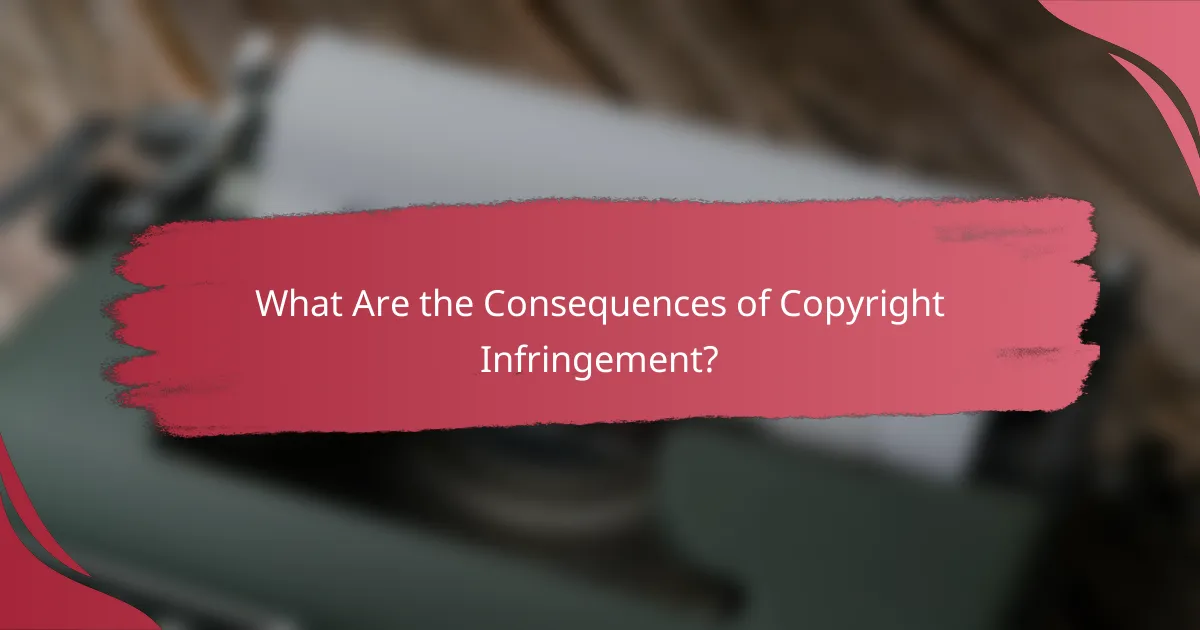
What Are the Consequences of Copyright Infringement?
Copyright infringement can lead to significant legal and financial repercussions for individuals and businesses. The consequences often include monetary damages, injunctions against further use, and even criminal penalties depending on the severity of the violation.
Monetary Damages
Monetary damages are one of the most common consequences of copyright infringement. These damages can vary widely, typically ranging from hundreds to millions of dollars based on the extent of the infringement and whether it was willful. Courts may award actual damages, which compensate the copyright owner for losses, or statutory damages, which are predetermined amounts set by law.
In some cases, the infringer may also be required to pay the copyright owner’s legal fees, further increasing the financial burden. To avoid such outcomes, it is crucial to seek permission before using copyrighted material.
Injunctions Against Use
Injunctions are court orders that prohibit the infringer from continuing to use the copyrighted work. These can be temporary or permanent, depending on the case’s specifics. An injunction can significantly disrupt business operations, especially if the infringing material is integral to a product or service.
To mitigate the risk of injunctions, individuals and businesses should conduct thorough copyright checks before using any content and consider obtaining licenses for necessary materials.
Criminal Penalties
In severe cases of copyright infringement, individuals may face criminal penalties, including fines and imprisonment. Criminal charges are more likely when the infringement is deemed willful and for commercial advantage. Penalties can vary, but fines can reach tens of thousands of dollars, and prison sentences may extend to several years.
To avoid criminal charges, it is essential to respect copyright laws and seek legal advice if there is any uncertainty about the use of copyrighted material.
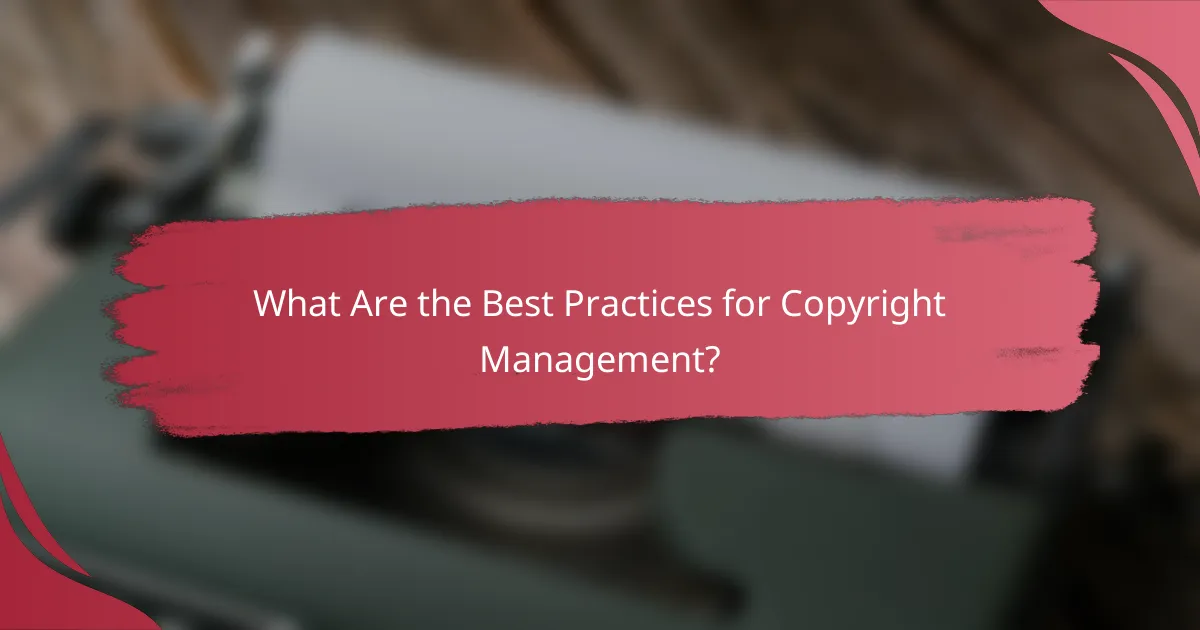
What Are the Best Practices for Copyright Management?
Effective copyright management involves understanding rights, conducting regular audits, and ensuring compliance with relevant laws. By implementing best practices, individuals and organizations can protect their intellectual property while minimizing legal risks.
Regular Audits of Content
Conducting regular audits of content is essential for maintaining copyright compliance. This process involves reviewing all published materials to ensure that they are either original, properly licensed, or fall under fair use. Regular audits help identify any unauthorized use of copyrighted materials and mitigate potential legal issues.
When performing audits, consider creating a checklist that includes verifying ownership of images, text, and videos, as well as checking licenses for third-party content. Aim to conduct these audits at least annually, or more frequently if your content is updated often. This proactive approach can save time and resources in the long run.
Common pitfalls during audits include overlooking user-generated content or failing to track changes in licensing agreements. To avoid these issues, maintain clear records of all content sources and their respective licenses. This will streamline the audit process and ensure compliance with copyright laws.
